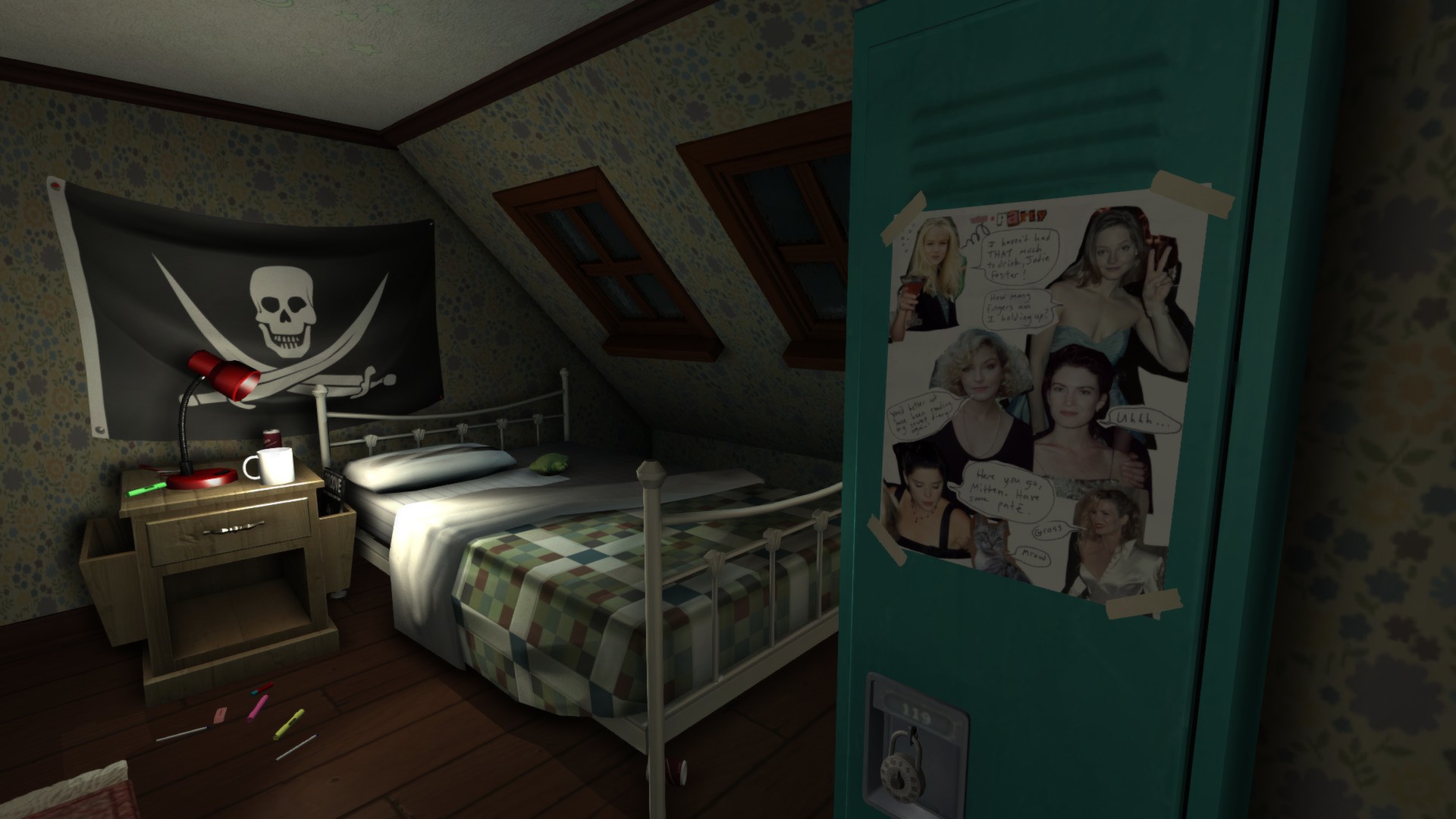Gone Home, a critically acclaimed walking simulator developed by The Fullbright Company, is a prime example of how the simple act of walking can be leveraged to tell a compelling story. Released in 2013 for Microsoft Windows, macOS, and Linux, with later ports to PlayStation 4, Xbox One, Nintendo Switch, and iOS, Gone Home has captivated players with its immersive narrative and atmospheric exploration.
 In Gone Home, players assume the role of Katie Greenbriar, a 21-year-old woman who returns to her family’s home in Oregon after a year abroad. Upon arriving, she discovers that her family is mysteriously absent. As Katie, players must explore the house, uncovering clues and piecing together the story of what happened during her time away.
In Gone Home, players assume the role of Katie Greenbriar, a 21-year-old woman who returns to her family’s home in Oregon after a year abroad. Upon arriving, she discovers that her family is mysteriously absent. As Katie, players must explore the house, uncovering clues and piecing together the story of what happened during her time away.
The act of walking through the Greenbriar home serves as the primary means of storytelling in Gone Home. As players navigate the various rooms and hallways, they encounter objects, notes, and audio logs that gradually reveal the family’s history and the events leading up to their disappearance. The slow, deliberate pace of walking allows players to fully absorb the narrative elements and encourages thorough exploration of the environment.
Gone Home’s level design plays a crucial role in guiding players through the story. Each room is meticulously crafted to provide visual cues and environmental storytelling that hint at the characters’ personalities, relationships, and struggles. For example, the cluttered and rebellious nature of Sam’s room reflects her teenage angst and the challenges she faces in coming to terms with her identity. By walking through these spaces and interacting with the objects within them, players gain a deeper understanding of the characters and their journeys.
The game’s audio design further enhances the storytelling experience. As players explore the house, they trigger audio logs featuring voice acting that brings the characters to life. These logs, often in the form of journal entries or personal messages, provide intimate glimpses into the characters’ thoughts and emotions. The act of walking and discovering these audio logs creates a sense of unraveling a mystery, as players must piece together the fragments of the story scattered throughout the house.
Moreover, the walking mechanic in Gone Home contributes to the game’s immersive atmosphere. The creaking floorboards, the patter of rain outside, and the eerie silence of the empty house all add to the sense of unease and mystery. As players walk through the dimly lit rooms, the atmosphere intensifies, drawing them deeper into the narrative and creating a powerful emotional connection to the characters and their struggles.
In conclusion, Gone Home exemplifies the potential of walking as a storytelling tool in video games. By centering the gameplay around exploration and discovery, the game allows players to uncover the narrative at their own pace, fostering a deep engagement with the characters and their stories. The act of walking through the meticulously crafted environment, triggering audio logs, and piecing together the clues creates a powerful and immersive storytelling experience. Gone Home serves as a testament to the power of walking simulators and their ability to deliver emotionally resonant narratives through the simple act of putting one foot in front of the other.



